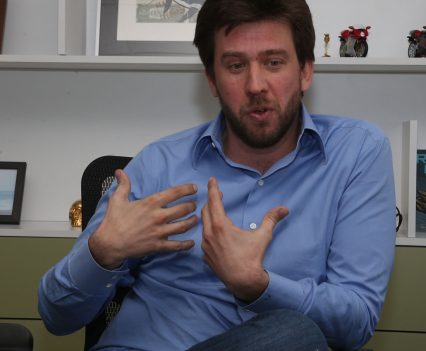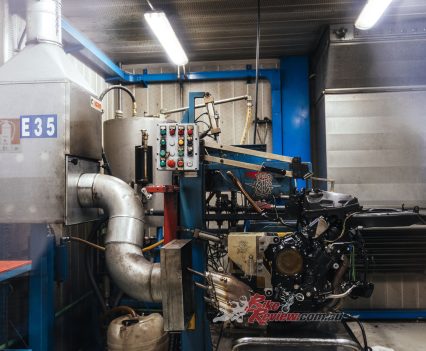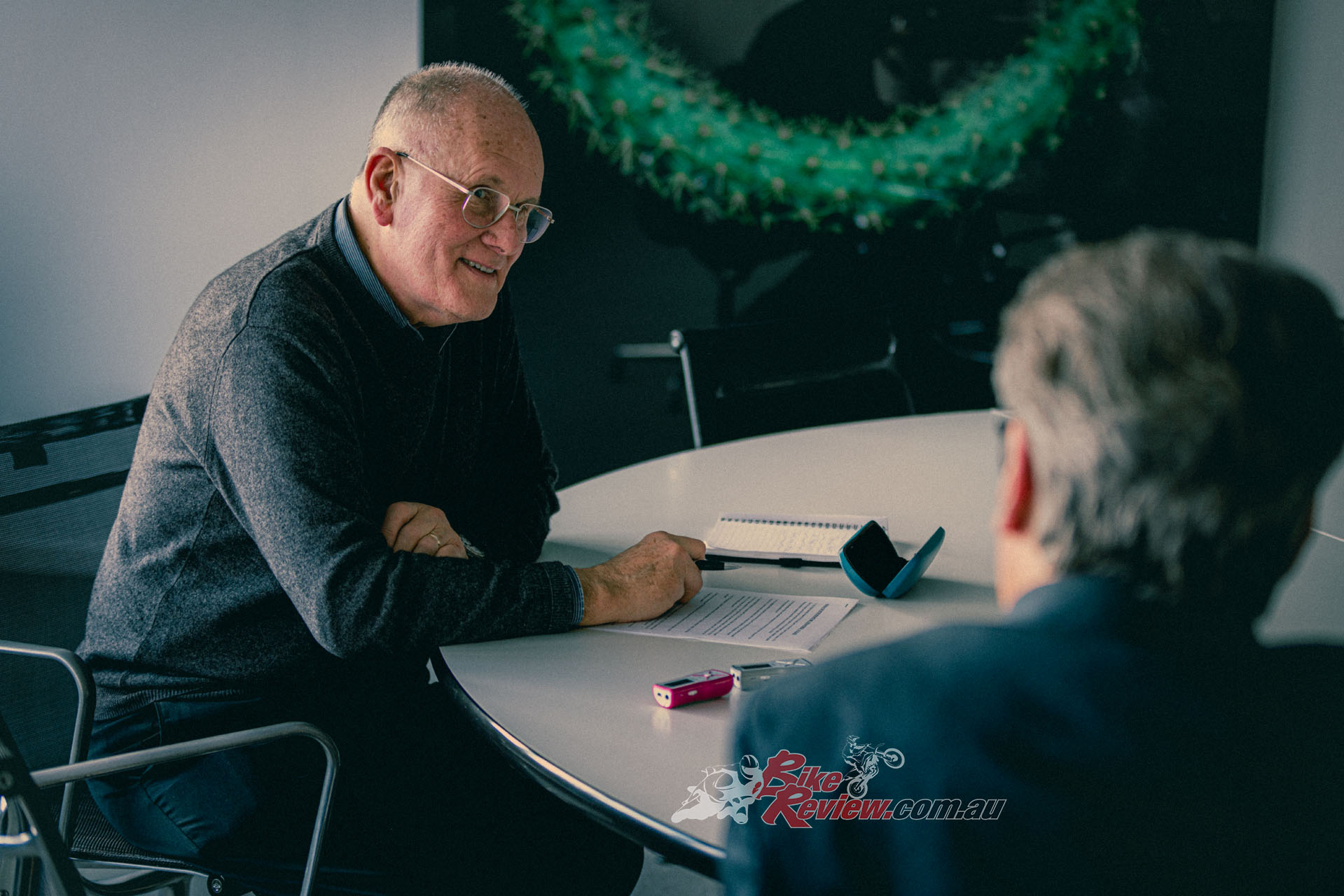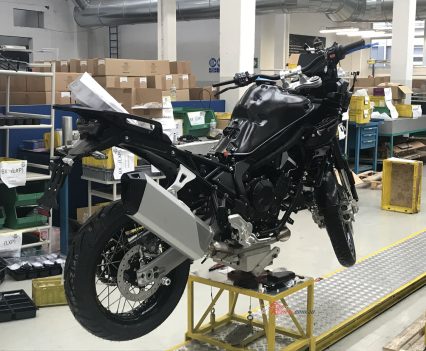Cathcart sat down with MV Agusta CEO, Timur Sardarov, and Pierer Mobility AG CEO, Stefan Pierer, to talk about the future of the brand following the announcement of a joint venture...
Up until 2023, MV Agusta has been entirely Russian-owned since Timur Sardarov, 40, completed his family’s acquisition of the historic Italian brand in September 2019, with a further injection of cash sufficient to obtain 100 per cent ownership of the company.
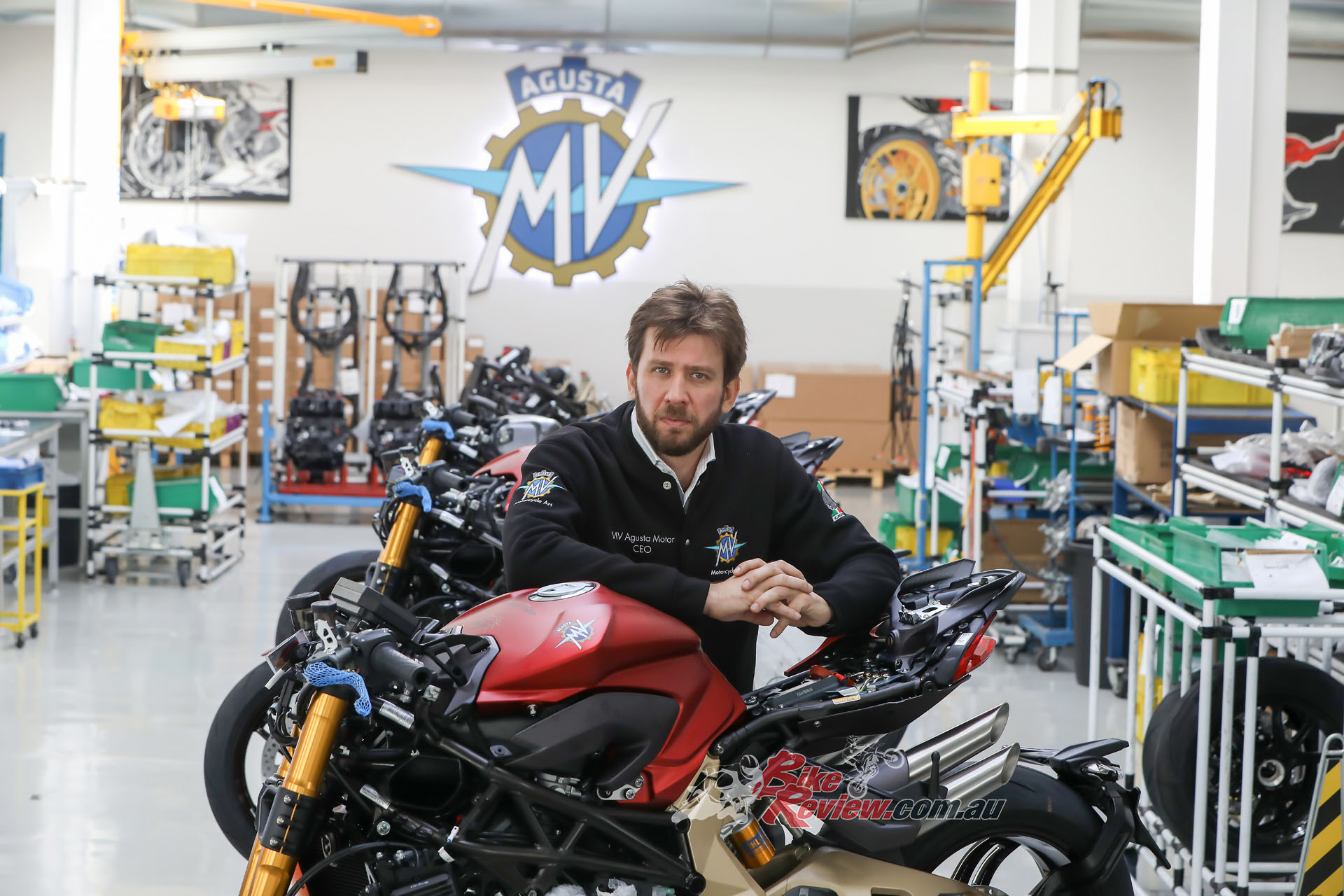
In 2016, Timur Sardarov began making a series of investments in MV which resulted in his purchasing Mercedes-AMG’s 25 per cent equity in 2017, and by 2019 obtaining 100 per cent ownership of MV Agusta from Castiglioni.
Up to that point he had invested almost 100 million euro in acquiring full control of MV, most of which had been devoted to recapitalising the company after three decades of its ownership flipping between the Castiglioni family and various outside interests (Proton, GEVI, Harley-Davidson, Mercedes-AMG), ever since the late Claudio Castiglioni, owner of Cagiva, personally acquired the dormant trademark from the Agusta family in 1991, and brought MV Agusta back to the marketplace in 1997 with the four-cylinder F4 designed by Massimo Tamburini.
Read further about the ownership change to KTM here…
Moscow-born Timur Sardarov moved to England in 2003, and with two daughters born there, made London his home until 2019, when as a mark of his commitment to MV Agusta, he moved to Italy. His oligarch father Rashid is one of the 500 richest men in Russia, his fortune deriving from the ComSar Energy Group, one of the country’s largest oil and natural gas companies. Timur Sardarov founded a UK-based private jet airline in 2005, but he sold this in 2013 to concentrate on his capital venture business Black Ocean Investment, which he’d established in 2006 in conjunction with British partner Oliver Ripley. In 2016 he met Giovanni Castiglioni, as an MV Agusta owner already, with a Dragster RR amongst his various bikes, which then included three Harleys (a Sportster, a Softail, and a Fat Boy), and a Ducati Diavel.
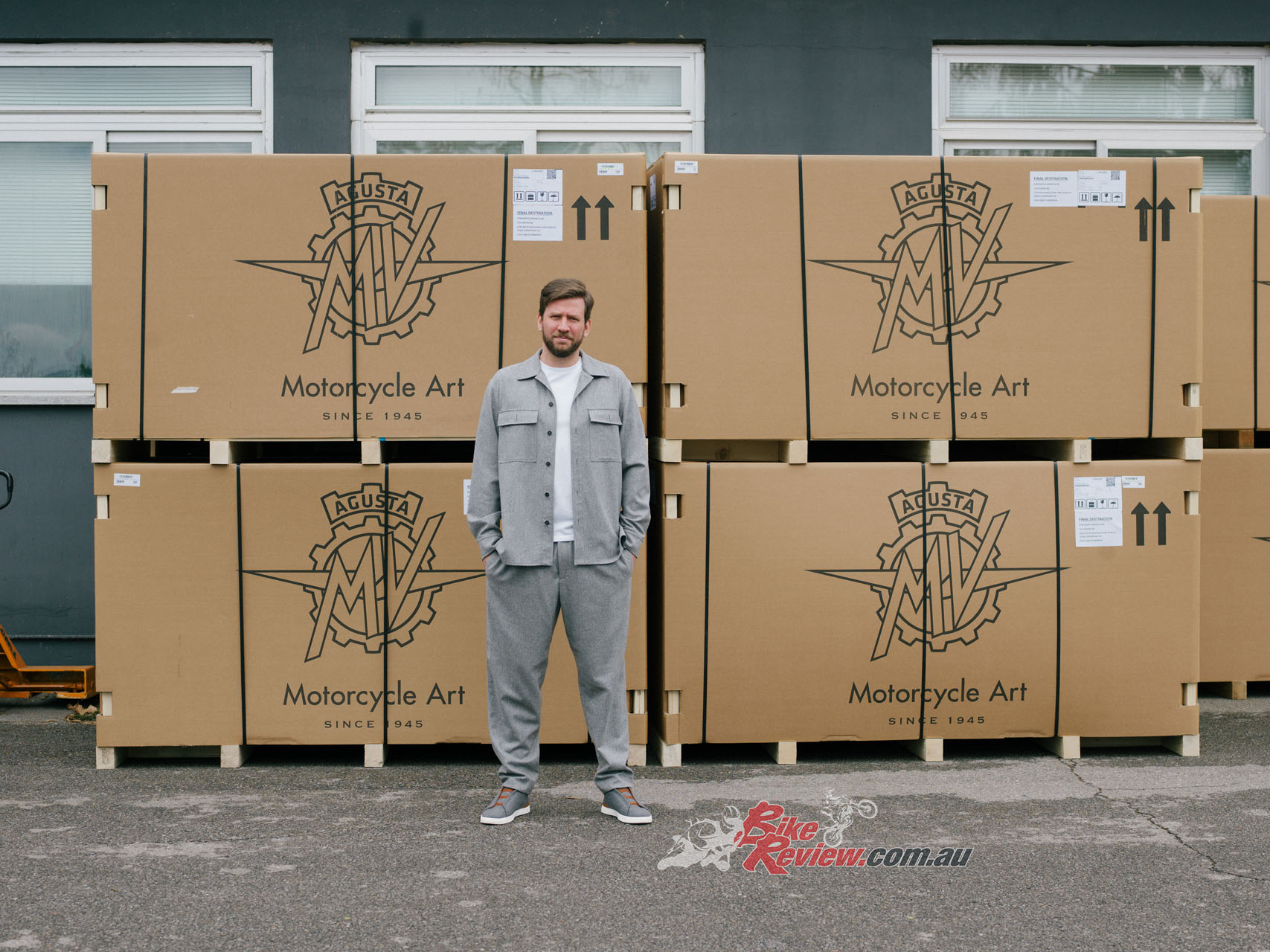
Moscow-born Timur Sardarov moved to England in 2003, and with two daughters born there, made London his home until 2019, when as a mark of his commitment to MV Agusta, he moved to Italy.
Sardarov and Castiglioni hit it off, so Black Ocean essentially financed the restructuring of MV Agusta after its then-latest bout of serial financial uncertainty. Sardarov assumed a hands-on role at MV’s lakeside Varese factory in June 2017, and as stated has been the outright owner of the prestigious manufacturer since 2019 – which he acquired just in time to have to grapple with the effects of the Covid pandemic.
Having survived that with ‘only’ a four-week March 2020 shutdown at MV Agusta’s Varese plant, the next hurdle he faced was the supply chain crisis which has hit all manufacturers in the process of regrouping, in all countries, and of all sizes, on both two wheels and four. And then Vladimir Putin decided to invade Ukraine, with consequences we’re still grappling with globally today. This all led directly to Sardarov’s decision to team up with Stefan Pierer, for reasons he sat down with me in MV’s Varese factory to explain.
AC: Timur, which of you contacted whom first – and when?
TS: I contacted Stefan first, but soon after I took over MV, so back in 2019. I have a huge respect for what he’s achieved – I think he’s the only true entrepreneur in the motorcycle industry, and so because for me it was a new venture, I wanted to meet him as someone who I have huge respect for, and to get his opinion about what I was doing. That was just an initial meeting, but then after that we met again in 2021 to discuss potential collaboration on the sales side, specifically in the American market. I was never happy with the sales network of MV Agusta. It’s always been the biggest limitation for this business, and it’s something I didn’t have the time or personnel to resolve as soon as it needed to be resolved, because Covid came soon after I took over the company, and I had to concentrate on so many other things rather than sales. KTM is probably the best in Europe at developing this side of the business, especially in the USA, and I thought it would be great for us to cooperate. Stefan agreed, so the first collaboration with Pierer Mobility was on the sales side, and after that we discussed forming a deeper partnership, including joint purchasing, and eventually decided to go for it last November.
AC: Was Pierer Mobility’s price for establishing this joint venture the 25.1 per cent of the company you have sold to them?
TS: Please understand that the money that they invested amounting to €30million went into recapitalising the company, so we didn’t take any money off the table. I’m not just selling off a slice of the MV Agusta company, it’s more a question of establishing a partnership with KTM as a company, and Stefan Pierer personally. But of course, in the future, it may be he’d like KTM to be a bigger part of MV Agusta as a business, and if so we’ll discuss that at a later stage. Right now, I believe the structures we’re establishing will allow MV Agusta to become profitable very quickly, by leaning on a big industrial partner with a vast supply network, and we’re already cooperating on establishing a joint sales and distribution operation. KTM will support MV Agusta in its supply chain management, and has already taken over MV’s purchasing department. This will help streamline component acquisition from common suppliers, and should also benefit MV in terms of cost reduction.
AC: Will your joint sales and distribution operation entail just the USA, or expand all over the world?
TS: All over the world, which will allow the sales force of KTM to improve the standard of MV Agusta’s retail representation. So we’re pretty excited about this – I think we can see clearly the benefits for both companies as well as MV’s customers in doing this, and how it’s going to work. As I said just now, we have two major problems here at MV right now – one is parts supply, the other is distribution, and I believe signing the deal with KTM will allow us to resolve both problems successfully. We presently have about 260 suppliers, with 70 per cent of them in Italy, and getting all the components we needed to start up again after the Covid shutdown was really challenging, even from Italian suppliers. But there were other reasons, too – production was further disrupted because we’d been introducing several new models, so for example Superveloce carbon parts come from India, which had a very strict lockdown. We began assembly of that model, but the carbon parts didn’t come, so now we had only part-assembled Superveloces we couldn’t deliver to customers, which of course impacted our cashflow severely. Then a lot of carbon suddenly arrived, so we had to catch up completing those bikes without falling behind with others!

MV Agusta sold 6,000 bikes in 2022. This year they’re going to increase that to 9,000 bikes, and 12,000 in 2024.
AC: How many bikes did you sell last year?
TS: Only 6,000. This year we’re going to increase that to 9,000 bikes, and 12,000 in 2024 by which time we will have our second production line up and running. This will give us a production capacity of 15,000 bikes a year.
AC: To what extent will KTM’s involvement dilute the Italian element in the MV Agusta brand?
TS: Not one single bit. CRC in San Marino will continue to define our new model strategy.

Future MV Agusta models will continue to be designed in Italy, not diluting any of that national pride.
AC: So future MV Agusta models will continue to be designed in Italy?
TS: Most definitely.
AC: Will it also be a requirement that all MV Agustas must be manufactured in Italy?
TS: I think it’s detrimental for this brand’s bikes to be made anywhere else, and Pierer Mobility understands that, too. It would be stupid for anyone to think that Italian products incorporating the heritage, the tradition and the style of this country can be produced anywhere else. Only Italians can design Italian products, and they must be made in Italy – and this was proven many times by different mistakes that certain other people made. Aston Martins should be produced in the UK, Porsches in Germany, Ferraris in Italy, and Bugattis in France, and it’s the same thing with Italian motorcycles which are conceived here

“I think it’s detrimental for this brand’s bikes to be made anywhere else, and Pierer Mobility understands that, too.”
AC: However, is technical development something else, because KTM has an extremely strong R&D operation? Would it not be sensible to use that to help you develop new MV Agusta products?
TS: 100 per cent we will do that. We’re going to share everything to do with technology, of course – I see no problem in this. We’re super open to improving the way we run the business – we want to improve, we want to get better, we’re very respectful of KTM’s skills and technical knowhow, and we’re very open to sharing it. But, everything to do with the strong DNA points of MV needs to be preserved – by KTM, by us, by anyone working with either of us, because the only way for MV Agusta to prosper financially is by the quality of its DNA, and this whole DNA can be created only by MV Agusta.
AC: If Stefan Pierer comes to you within the next five years and says, I want to buy 100 per cent of MV Agusta, what will your answer be?
TS: Like I said earlier, if Stefan decides he wants KTM to play a bigger part in MV Agusta as a business, we will discuss that – but only at a later stage. Our contract lasts for five years, during which I intend to be fully hands-on at MV Agusta. I would say I gave a lot to this company, and I want it to be strong again, and standing alone. For me what’s important is to make sure that this company is standing by itself, and its unique DNA, its people, its workers, its community, its approach to engineering, is all preserved intact.
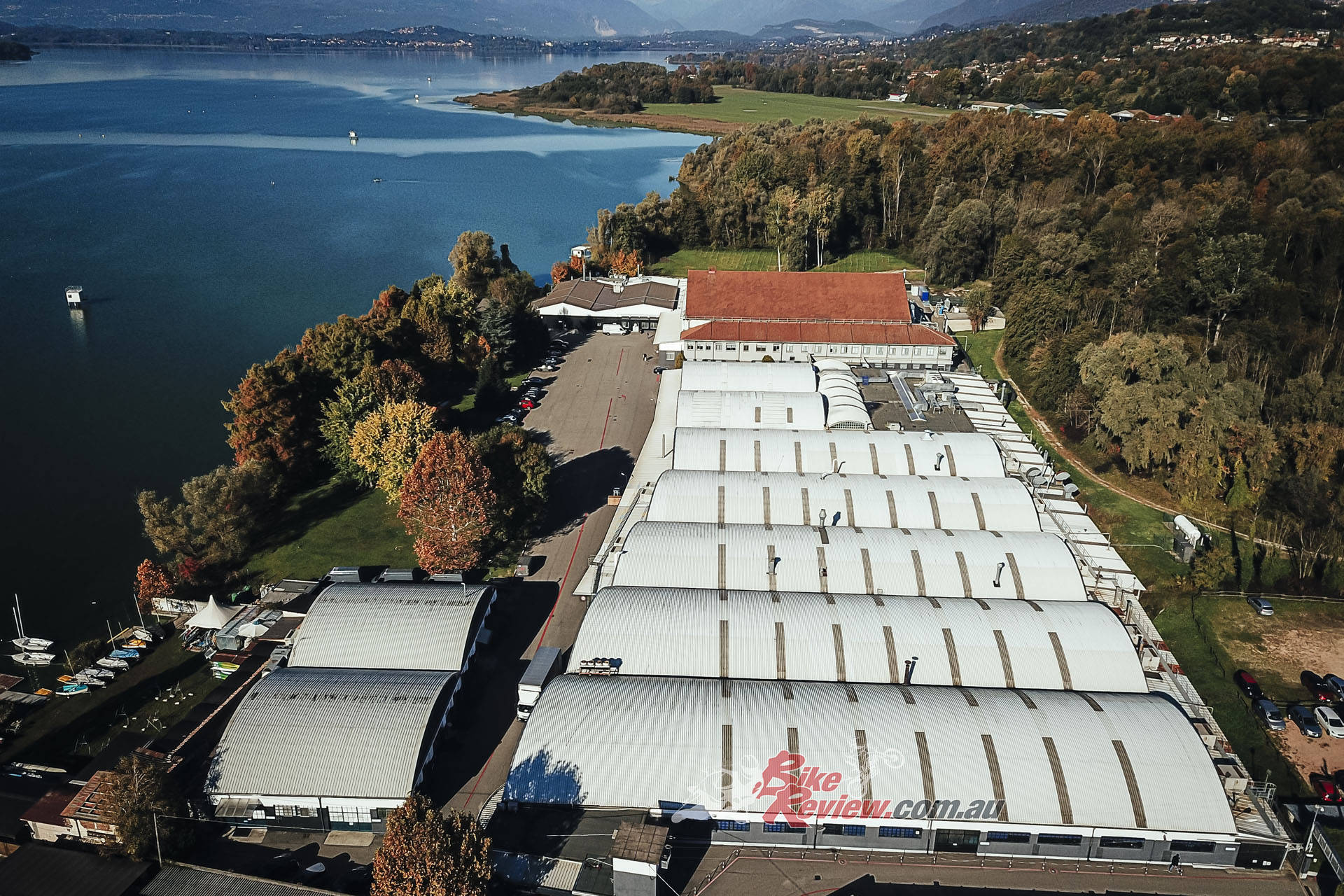
“Part of the transition of the company into its future existence will entail redesigning all the facilities here at Schiranna to make this place the real House of Excellence.”
Part of the transition of the company into its future existence will entail redesigning all the facilities here at Schiranna to make this place the real House of Excellence. We’re going to start construction within the next few months, and this place will become a true home of MV Agusta notwithstanding that it looks like a collection of industrial aircraft hangers – which it is! – but actually as the place where MV Agusta belongs. We’ll have part of our R&D facility based here, we’re going to build a Museum that will be open to the public housing a collection of historic MV Agustas we’re in the process of assembling, and what we want to build is a place where the client and the customer can actually see Italian craftsmanship at work, where we’re the last major manufacturer to really do hand assembly of our product. That’s why we’re limiting our capacity to around 15,000 bikes a year, to be able to make them in this way. Nowadays we live in a world where we’re constantly consuming new products manufactured as efficiently and cost-effectively as possible – but what we’re building here are timeless pieces of functional art. We want customers to own our bikes for years, to pass them down to different generations not as products, but mechanical oil paintings you can also get great satisfaction from riding. So that’s why we need to really set up the right foundation to do so, and with our new partners, I think it’s possible.
AC: How much money have you invested in MV Agusta so far, in total?
TS: About €200million. But altogether over the last five years the company has raised close to €300million, so it’s well funded, it’s stable, and it has a lot of potential.
AC: But are you personally, Timur Sardarov, are you still in it for the long term? Coming from outside the world of motorcycles, to be responsible for saving such a historical motorcycle brand, must give you some satisfaction. Do you get any satisfaction from the fact that you’re essentially the man who saved MV Agusta?
TS: I mean it does, but I don’t look at it like this, I look at it as more the pressure on myself rather than just satisfactory. Firstly it’s not me, it’s my family, because the amount of money that MV Agusta needed was much more than I could personally afford myself, so my father had to become involved, too. But yes, I understand the significance of this in terms of MV’s special status in the motorcycle industry, and it’s put a lot of responsibility on me personally. But I’m committed to seeing it through. I still haven’t thought about leaving it, because again, for me this partnership is the third step. The first step was where I just invested, and the second I had to take it over, and the third step I had to bring in a partner, and I am very happy with this partnership, to make sure that this company has a future. I’m not looking yet at making any more steps!
Stefan Pierer – Pierer Mobility AG President/CEO
Pierer Mobility AG President/CEO Stefan Pierer, 66, is the hands-on boss of Europe’s largest motorcycle manufacturer, which besides KTM, Husqvarna, GASGAS and Felt bicycles, and as well as a joint venture with China’s CFMOTO, has now expanded to include a minority holding in MV Agusta. Here’s how he views MV’s future, as expressed to me in a recent exclusive interview.

Pierer Mobility AG President/CEO Stefan Pierer, 66, is the hands-on boss of Europe’s largest motorcycle manufacturer, which besides KTM, Husqvarna, GASGAS and Felt bicycles, and as well as a joint venture with China’s CFMOTO.
AC: Stefan, after purchasing 25.1 per cent of the equity in MV Agusta from its present owner, Timur Sardarov, what is your strategy for your future involvement in the brand?
SP: As part of that 25.1 per cent, it’s taking the first step of working together very closely on current production models. So we’ll take care of the whole supply chain, we’ll buy all the parts needed for MV Agusta’s production for the coming year, and then, after finalising that, we’ll take over worldwide distribution of the finished product. This is the first step to helping them make their entire operation profitable as a company. And you know me quite well, so within a certain period, MV Agusta will join the PIERER Mobility family as a 100 per cent full member.
AC: To begin with, though, presumably your involvement will not only be with MV Agusta’s supply chain and distribution, but also certain product development strategies, such as – should they be making the Lucky Explorer 9.5 and 5.5?
SP: Nobody needs those branded with that name. Adventure bikes are a big market sector, but they’re also the most difficult segment, and the most competitive to be present in. Nobody is waiting for such a model from MV Agusta.
AC: Except, do you think that if you branded such a bike as an MV, and made it a two wheeled Range Rover, so purely a high performance luxury road bike, would there perhaps be a market for that?
SP: Possibly, but in my opinion, before you enter a new sector with something as radically different as this by MV Agusta standards, first and foremost you have to get those product segments right which the MV Agusta brand really stands for. And there is a lot to do there, believe me.
AC: So what kind of products do you think MV Agusta should be making?
SP: Where MV Agusta’s coming from, it’s high end. I wouldn’t say luxury, but it’s premium high end. I think the Brutale will be a good basis for some very nice developments, but for me, the model that still captures the essence of MV Agusta is the F4. When it first appeared 25 years ago it had so many nice details – it was perfect, and very beautiful. But I would say that that style got lost in the last decade, because they had other problems to worry about, and Tamburini was no longer making the bikes, too. You have to focus on stabilising the existing product line, on cleaning up the current range of models, while still already thinking further ahead.
AC: Must MV Agusta have more than just high-end niche models – do you believe they need to have the 800cc three cylinder range in order to be able to generate volume?
SP: Sure, besides the high end we must have premium middleweight models. Their new three-cylinder engine, the 920, 950, it’s a very good engine, so yes, it’s clear. What we are also experiencing in the market, is that a lot of the big displacement owners in the high end class are stepping down to smaller capacity models, because they’re getting older, so the weight of the bike, and the rideability, the handling, it all becomes easier. I met several guys who stepped down from a KTM 1290 Super Adventure to a 390 Adventure because of this.
AC: So, for that reason do you think a 590 Lucky Explorer made in China carrying the MV Agusta name will be OK?
SP: No, don’t even think about such a thing, never ever! It must stay premium in terms of capacity as well as design, and provenance. All MV Agustas must be made in Italy, and the smallest capacity will be the 900 three-cylinder.

So does all this mean we can look forward to bright orange MV Agustas? “Absolutely not”, says Florian Kecht.
AC: However, let me go back again to the two wheeled Range Rover, your customers are getting older, so they want something that is more comfortable, still with high performance.
SP: That’s the reason that the Adventure segment is growing so nicely.
Read more about the LXP here…
AC: Exactly – so an MV Agusta Range Rover would surely be a valid product.
SP: Yes, but before you launch such a model you have to win back the credibility about where you’re coming from, instead of doing new things which are not part of the brand’s heritage.
AC: Brough Superior and Aston Martin have shown that it’s viable to charge 108,000 Euro for each example of a 100-bike line of ultra-deluxe beautifully designed motorcycles carrying a historic badge, and sell every one. Is this something you feel MV Agusta should be looking at?
SP: Yes, I do. We have done a similar joint project with Brabus in Germany with the KTM Super Duke R Evo where all 290 examples sold out online in one minute and 55 seconds flat at 42,500 Euro each! Very impressive – and to that extent, for sure, sooner or later that’s what I see MV Agusta as doing, after we have stabilised the core programme.
AC: Do you believe that MV Agusta must go racing?
SP: No – and especially not with a three-cylinder Triumph engine in its Moto2 bike!
AC: Will KTM engineers assume responsibility for future development of the technical aspect of MV Agusta products?
SP: Yes, for sure, we’ve already helped them on engines from Day One of our partnership, and this will expand considerably in future.
Editor’s Note: If you are reading this article on any website other than BikeReview.com.au, please report it to BikeReview via our contact page, as it has been stolen or re-published without authority.








